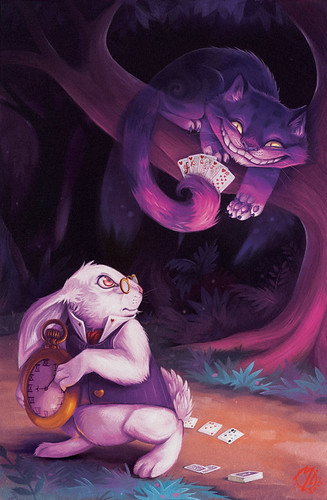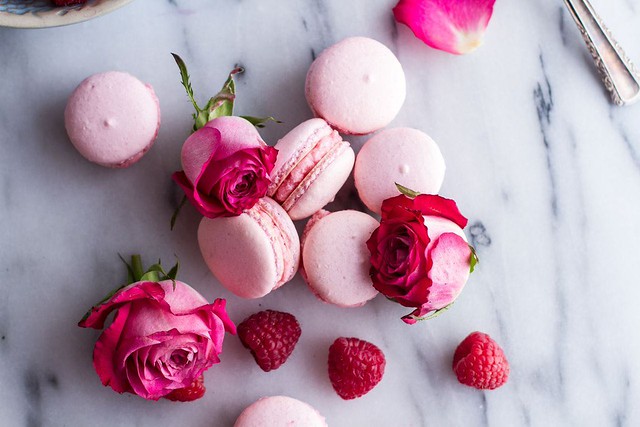“The easiest way to steal something, is for it to be given willingly.”
– Marissa Meyer, Heartless
So, this is my first Young Adult read in a very long time, and I have to say that I was very pleased with the fact that there had been a recent release related with Wonderland! I am a huge lover of Lewis Carroll’s most iconic and influential classic, so I was naturally excited to read Marisa Meyer’s prequel to the story.
“Heartless” tells the backstory of the canonical work’s most notorious antagonist, the Queen of Hearts. The Kingdom of Hearts is governed by a seemingly nonchalant and joyful King. In the kingdom, Catherine Pinkerton, the only daughter of the Marquess and Marchioness, has a dream of opening her very own bakery. Her beauty and delectable pastries have attracted the attention of the King, but she shows no interest for romance. That is, until she meets the kingdom’s Court Joker, Jest, to whom she is deeply attracted to. In achieving her dream, to live her romance, all while dealing with her inner conflict, family struggle, and a monstrosity that is the Jabberwock, we will see the unseen side of the merciless Queen of Hearts in her youth.
This is my first read on Marissa Meyer’s work, and her narrative is just so compelling to me. Meyer managed to write in a way that is not overflowing with flowery descriptive, but just enough details to verbally illustrate the retold Wonderland. The dialogues are lively, intriguing, and animated, especially since they really show the unique traits of each character. We have the unpredictable Cheshire Cat, the moral value-obsessed Duchess (named Margaret Mearle), the incorrigible Mad Hatter, and a number of more fresh characters. Such devotion to the original is really commendable for me, since in a form of retelling, having characters out of character is a really serious ‘sin’. Well, not really, but it is a turn-off to some extent 😛 .

The Cheshire Cat has always been my favorite character, including here! Source: http://www.deviantart.com/art/Royal-Flush-298840727
The nonsensical nature of Wonderland (though I should just say the Kingdom of Hearts) is still there, where the Hatter, or Hatta, runs from time; the Cheshire Cat’s vanishing antics, the famous “DRINK ME” shrinking potion, the croquet game, and the literal Lobster Quadrille. Most of the things that old fans have come to know and love are reintroduced or at the very least, referenced in the story, and that can make reading it a hunt for these subtle, yet fun elements. Therefore, reading Meyer’s “Heartless” can really feel like going down into the Rabbit Hole all over again, with the fantastical characters and wonderful world.
As weird as the tale is, however, those are not the primary focus of the book. Meyer emphasizes the more ‘logical’ point of the Kingdom of Hearts, making the nonsensical occurrences side-dishes, while serving drama and emotional struggle as the main course. We are not presented with a tale full of absurdity, but we are wearing the shoes of Catherine so that we can understand and relate to her feelings, which are by no means nonsense. The characters, from the Duke of Tuscany, Sir Peter, even the King of Hearts have their own sides which are definitely humane and not absurd; we are reminded that even in the apparently mad world, the inhabitants are still sane, that Wonderland is not all nonsense. This brings another unexplored side of the world, and that is another plus point since it allows the room for in-depth character development (which the book certainly has), and that appeals to the older audience much more.

There will be lots of cakes, tarts, and especially macaroons while reading. Get ready to get hungry! Source: HERE
Starting out innocent and pure, simply wanting to fall in love, we all know the inevitable end that will shape her into one of the most recognized villains in literature, turning the magical Kingdom of Hearts into a world of madness. Now, that knowledge is exactly what makes reading “Heartless” engaging. How can such a nice, sweet girl turn into an abominable tyrant? Meyer has provided a nicely constructed, reasonable cause for that, and despite us knowing the outcome, the string of events that unfold, with more and more conflicts can really make the pages fly. I won’t spoil anything about the unfolding events here, but they are nowhere near shallow! (although they are predictable to some extent).
Nevertheless, there is one point that somehow bothered me while reading, and I am sure that it has bothered a number of readers, too: love at first sight. I honestly believe that Cath falls in love too soon, too easily, and too helplessly with Jest the Court Joker. She wants a bakery, is resilient in not wanting to marry the wealthy King, but a handsome joker appears, and she falls in love very shortly after. I know that love is inexplicable and can be very sudden, but reading sentences about Cath’s inability to resist Jest’s presence, her feeling more and more attracted to him and such irked me a few times during the earlier pages. After managing to finish the first quarter of the book, however, things got really interesting, so I guess that isn’t a major problem, after all XD .
“Heartless” is a wonderful book, even for those new to Wonderland. Of course, for those familiar with Alice and her adventures, there will be numerous plus points while reading, but newcomers can enjoy it too in my opinion. It is a heartbreaking book, and I do hate Catherine since she made so many wrong decisions throughout the book, or the right decisions at the wrong time, but I can relate to that; yes, I hate her but also pity her at the same time. I believe that is what Meyer intended when writing this, and boy, has she succeeded in doing so.
Now I can never view the Queen of Hearts the same again. Oh, and the Hatter too! Read this one and find out 😃
Rating from me: 4/5
Have you read the book? If yes, What do you think about it? If no, do you plan to? Let me know! 🙂






